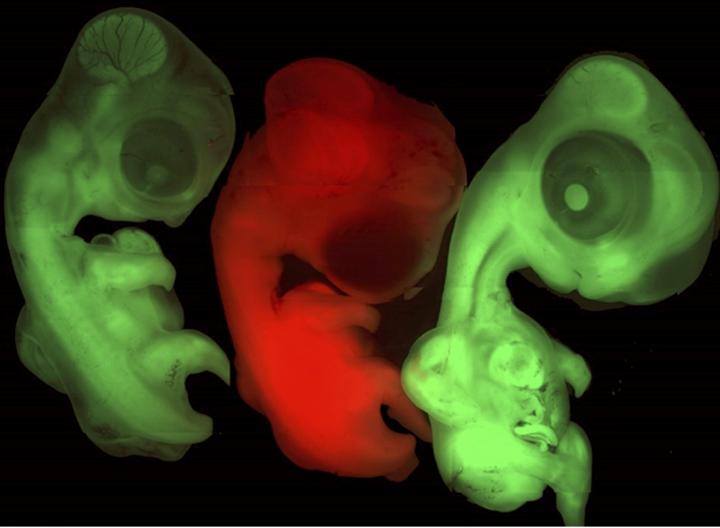Flamingo (TdTomato)
Ubiquitous cytoplasmic expression of TdTomato
Summary & Utility
The Flamingo chicken line is a powerful tool for developmental biology, facilitating fate mapping and tissue grafting. TdTomato (redFP) is expressed ubiquitously in early embryos and extra embryonic tissues, with expression continuing to adult birds, although we have not characterised this in detail. The Flamingo line is potentially more useful than the Cytoplasmic GFP line for transplantation as there is less autofluorescence in the red channel compared to green. Grafts of TdTomato cells into a cytoplasmic GFP recipient embryos (or vice versa) enable greater detail for donor cell tracking and live imaging1 than transplantation from either into wildtype embryos. This method has been used to further elucidate limb bud development1 and feather array patterning2.
Line origin
The Flamingo line is a relatively recent addition to our reporter lines. Generation of the line at the Roslin Institute was described by Ho et al. (2019)2 and mentioned by Davey et al. (2018)1. The line was generated by using a piggyBac transposon vector to insert a transgene consisting of the CAGGs enhancer/promoter (developed by Niwa et al. 19913), driving expression of TdTomato2. The transposon vector was co-transfected with a plasmid for expression of piggyBac transposase into cultured primordial germ cells. These were selected by fluorescence activated cell sorting (FACS) to enrich for cells expressing TdTomato and injected into host embryos which were incubated to hatch. A line was established by breeding from these birds and selecting for those carrying a single copy of the TdTomato expression construct. This line was originally funded by the Wellcome Trust (grant number: WT094182AIA).

For publications please reference; Ho, William KW, et al. Feather arrays are patterned by interacting signalling and cell density waves. PLoS biology 17(2), e3000132, (2019).
Publications
- Davey, M. G., Balic, A., Rainger, J., Sang, H. M. & McGrew, M. J. Illuminating the chicken model through genetic modification. Int. J. Dev. Biol. 62, 257–264 (2018).
- Ho, W. K. W. et al. Feather arrays are patterned by interacting signalling and cell density waves. PLoS Biol. 17, (2019).
- Niwa, H., Yamamura, K. & Miyazaki, J. Efficient selection for high-expression transfectants with a novel eukaryotic vector. Gene 108, 193–199 (1991).


